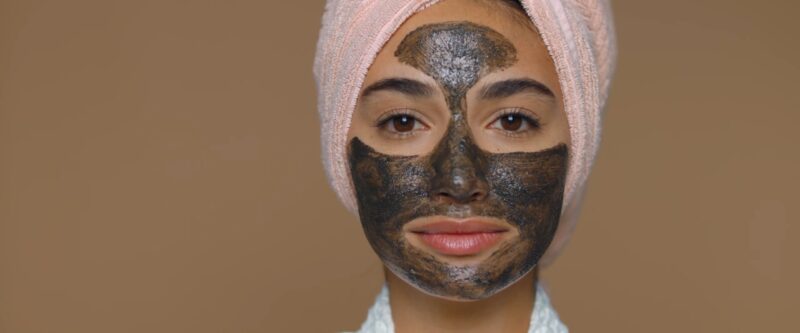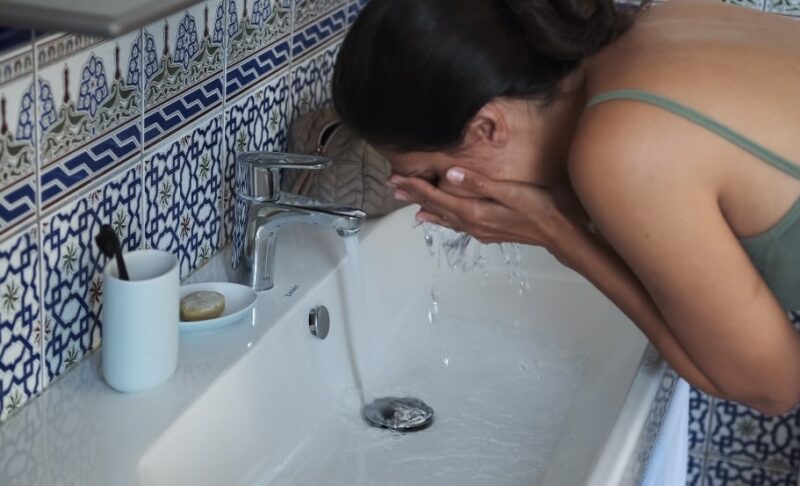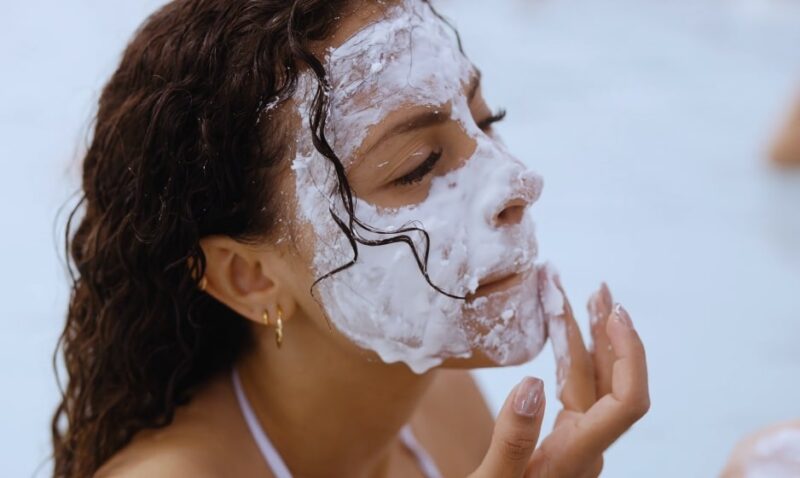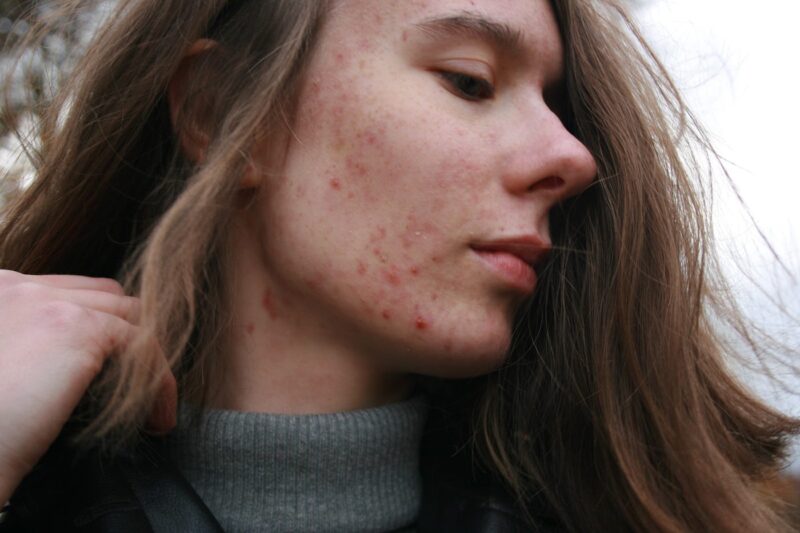Isn’t dry skin just the worst? I mean, seriously, you try everything—moisturizers, creams, the works—and yet your skin still feels like it’s been left out in the Sahara. It’s frustrating, no doubt about it. But here’s the thing: dry skin doesn’t discriminate.
It doesn’t care if you’re young or old, a man or a woman. It’s a problem that plagues us all. With that said, let’s discuss why this happens and explore some of the most common reasons behind it.
| Issue | Solution |
|---|---|
| Not Exfoliating Regularly | Exfoliate 1-2 times a week with a suitable product for your skin type. |
| Overwashing or Too Frequent Bathing | Limit showers to 5-10 minutes with lukewarm water; adjust frequency as needed. |
| Dehydration or Inadequate Water Intake | Aim for 2.7 liters (women) / 3.7 liters (men) of water per day. |
| Poor Nutrition or Malnutrition | Consume a balanced diet with omega-3s, vitamins E and C, and hydrating foods. |
| Using Harsh Skin Cleansers | Use gentle, hydrating, pH-balanced cleansers without sulfates. |
| Using Expired Moisturizers | Replace moisturizers every 6-12 months; check PAO symbol and storage conditions. |
| Needing a Different Skincare Product | Choose products based on your skin type and concerns; patch test new products. |
| Side Effects of Certain Medications or Medical Treatments | Maintain hydration and consult with a doctor for tailored skincare advice. |
| Exposure to Cold and Dry Climates | Use hydrating serums, occlusive agents, and heavier creams; consider a humidifier. |
| Taking Very Hot Showers | Shower with lukewarm water for no longer than 10 minutes; moisturize after showering. |
| Over-Moisturizing | Use appropriate amounts of moisturizer; adjust product type and frequency as needed. |
| Confusing Dry Skin with Dehydrated Skin | Identify your skin condition; use oil-rich products for dry skin and hydrating ingredients for dehydrated skin. |
1. Not Exfoliating Regularly

Exfoliating is akin to lending a helping hand to your skin. It delicately eliminates lifeless skin cells that can rob your skin of its radiance and hinder the optimal absorption of moisturizers. If you neglect exfoliation, your skin may miss out on the abundant benefits bestowed by your moisturizers.
How to Exfoliate Properly
Proper exfoliation is key to healthy, glowing skin. Here’s how to do it right:
- Choose the Right Exfoliant: Pick a product that suits your skin type. For sensitive skin, use a gentle exfoliant; for oilier skin, you might opt for something stronger.
- Frequency Matters: Exfoliate 1-2 times a week. Over-exfoliating can irritate your skin, so moderation is crucial.
- Gentle Application: Apply the exfoliant in a gentle, circular motion. No need to scrub hard – think of it as a light massage for your face.
- Rinse with Lukewarm Water: Hot water can be harsh on your skin. After exfoliating, rinse with lukewarm water to soothe and calm the skin.
- Moisturize Afterwards: Exfoliating can leave your skin feeling a bit bare, so follow up with a hydrating moisturizer to replenish any lost moisture.
- Listen to Your Skin: If your skin feels irritated or overly dry after exfoliating, you might need to switch products or reduce the frequency. Your skin’s response is the best guide.
2. Overwashing or Too Frequent Bathing

If you wash excessively, you might end up removing the natural oils from your skin, almost like removing its own moisturizer. As a result, your skin could become dry and vulnerable.
What is the Best Timeline?
Finding the right balance in your bathing routine is essential to maintain your skin’s health. Here’s a guide to help you figure out the best timeline:
- Daily Washing: It’s generally okay to wash your face and body daily, but be mindful of the products and the water temperature you use. Lukewarm water and gentle, hydrating cleansers are the best choices.
- Limit Long, Hot Showers: Try to keep showers short, around 5-10 minutes, and use warm rather than hot water. Long, hot showers can strip away natural oils more aggressively.
- Face Washing Routine: Washing your face twice a day – morning and night – is usually sufficient. However, if you have dry or sensitive skin, a nightly wash may be enough, using just water in the morning.
- Post-Workout Cleansing: Always cleanse your skin after sweating heavily, like after a workout, to remove excess salt and oils that can be irritating.
- Adjust According to Skin Needs: Listen to your skin. If it feels overly tight or dry after washing, you might need to reduce the frequency or change your products.
- Seasonal Adjustments: In winter, when the air is drier, you might need to bathe less frequently or switch to more moisturizing products.
3. Dehydration or Inadequate Water Intake

Just like the rest of your body, your skin also craves hydration. When you don’t drink enough water, it can cause dehydration, leaving your skin feeling dry and looking parched.
What Amount of Water Do We Need?
Drinking eight glasses of water a day is often seen as a solid guideline, but the ideal amount really depends on your unique circumstances. Various factors, such as your general well-being, how active you are, and the climate you’re in, all come into play.
As a general rule, women should strive for approximately 2.7 liters (91 ounces) of water daily, obtained from both food and drinks, while men should aim for about 3.7 liters (125 ounces).
4. Poor Nutrition or Malnutrition
“You are what you eat” is not a saying anyone should take lightly. The food you consume has a direct impact on your skin. If you don’t get enough vital nutrients, your skin can become dry and dull. It’s similar to attempting to nurture a plant without providing it with the necessary soil nutrients.
What is the Best Nutrition for Skin Care?
To keep your skin healthy and hydrated, focusing on a balanced diet rich in certain nutrients is key. Here’s what to include:
- Omega-3 Fatty Acids: Found in fish like salmon and mackerel, as well as in flaxseeds and walnuts, these fats help maintain the skin’s oil barrier, keeping it hydrated and plump.
- Vitamins E and C: Vitamin E, present in nuts and seeds, protects skin from oxidative damage, while Vitamin C, found in citrus fruits, strawberries, and bell peppers, aids in collagen production, keeping skin firm and healthy.
- Water-Rich Fruits and Vegetables: Foods like cucumbers, tomatoes, oranges, and watermelons contribute to hydration and provide essential vitamins and antioxidants.
- Zinc: This mineral, important for skin repair, can be found in meats, shellfish, legumes, and whole grains.
- Healthy Fats: Avocado, olive oil, and nuts contain healthy fats that keep skin flexible and moisturized.
- Hydration: Alongside water, herbal teas and soups also contribute to your daily fluid intake, aiding in skin hydration.
Proper nutrition can help you prevent many other health issues, including those related to the skin, such as acne pustules.
5. Using Harsh Skin Cleansers

Using harsh cleansers on your skin can be quite aggressive, as they tend to strip away the natural oils. It’s like using a strong detergent on a delicate fabric – your skin ends up feeling overwhelmed in a similar way.
What is the Best Skin Cleanser?
Choosing the right skin cleanser is essential for maintaining your skin’s health without stripping it of its natural oils. Here’s what to look for:
- Gentle Formulation: Opt for cleansers that are labeled “gentle” or “for sensitive skin.” These are usually less likely to contain harsh ingredients.
- Avoid Sulfates: Ingredients like sodium lauryl sulfate (SLS) and sodium laureth sulfate (SLES) are common in cleansers but can be too harsh, especially for dry or sensitive skin.
- Hydrating Ingredients: Look for cleansers with hydrating components like glycerin, hyaluronic acid, or ceramides, which help maintain skin moisture.
- pH-Balanced: The skin’s natural pH is slightly acidic, around 5.5. A pH-balanced cleanser will help maintain this balance, keeping the skin’s barrier function intact.
- Non-Comedogenic: Especially important for acne-prone skin, non-comedogenic cleansers won’t clog pores.
- Fragrance-Free: Fragrances can irritate the skin, so it’s often better to choose fragrance-free options, particularly if you have sensitive skin.
- Oil-Based Cleansers: For those with dry skin, oil-based cleansers can be a great option as they cleanse without stripping away natural oils.
6. Using Expired Moisturizers
Sometimes, expired products might not perform as effectively as we hope. It’s similar to incorporating stale ingredients in cooking – they simply don’t fulfill their intended purpose.
What is the Common Shelf Life of Moisturizers?
The shelf life of moisturizers can vary based on their ingredients and packaging, but here are some general guidelines:
- Typical Shelf Life: Most moisturizers are designed to last between 1-2 years unopened. Once opened, they are generally effective for 6-12 months.
- Check the PAO Symbol: Look for the “Period After Opening” (PAO) symbol on the packaging, usually a small jar icon with a number and the letter ‘M’ (e.g., 12M for 12 months). This indicates how long the product is effective after it’s been opened.
- Preservative-Free Products: Natural or organic products without preservatives may have a shorter shelf life, often around 6 months.
- Storage Conditions: How you store your moisturizer can affect its longevity. Keep it away from direct sunlight, high temperatures, and humidity to prolong its shelf life.
- Changes in Texture or Smell: Pay attention to any changes in the product’s consistency, color, or smell. These can be signs that the moisturizer is past its prime.
- Packaging Type: Products in pumps are generally more stable and last longer than those in jars, as they are less exposed to air and contaminants from fingers.
7. Needing a Different Skincare Product

Not all moisturizers are created equal. Sometimes, your skin may require a different kind of hydration or specific ingredients.
How to Choose the Right Skincare Product
Selecting the right skincare product, especially a moisturizer, is vital for addressing your skin’s unique needs. Here’s how to make the best choice:
- Know Your Skin Type: Identify whether your skin is dry, oily, combination, sensitive, or normal. Each type has different needs – for instance, oily skin might benefit from lightweight, oil-free moisturizers, while dry skin might need richer, more nourishing creams.
- Consider Skin Concerns: If you have specific issues like acne, redness, or signs of aging, look for products formulated to address these concerns without compromising hydration.
- Read Ingredients Carefully: Look for key hydrating ingredients like hyaluronic acid, glycerin, and ceramides. Avoid potential irritants like alcohol and fragrances, especially if you have sensitive skin.
- Patch Test: Before committing to a full-size product, do a patch test to check for any allergic reactions or irritations.
- Check Reviews and Recommendations: Look for reviews from users with similar skin types and concerns. Dermatologist recommendations can also be a valuable resource.
- Seasonal Changes: Your skin’s needs can change with the seasons. You might need a heavier moisturizer in winter and a lighter one in summer.
- Don’t Overlook Texture: The feel of a product on your skin is important. You might prefer a lighter gel-based moisturizer or a heavier cream based on personal preference.
- Sun Protection Factor (SPF): For daytime use, consider a moisturizer with SPF to protect your skin from UV damage.
8. Side Effects of Certain Medications or Medical Treatments

Certain medications or treatments have the potential to cause dryness in your skin as an unintended consequence. It’s similar to how medications can have side effects. Numerous medications and medical procedures may inadvertently lead to the drying out of your skin. Some examples include:
- Diuretics: Used for high blood pressure, they increase urination and can lead to dehydration, affecting skin hydration.
- Topical Acne Treatments: Products containing benzoyl peroxide or salicylic acid can be drying.
- Retinoids: Used for acne and aging, retinoids can cause skin dryness and irritation.
- Chemotherapy: Cancer treatments can alter skin cells and decrease oil production.
- Antihistamines: Used for allergies, they can reduce natural oil production in the skin.
- Certain Antibiotics and Antidepressants: Some types may affect your skin’s moisture balance.
9. Exposure to Cold and Dry Climates

When the weather turns cold and dry, it’s like plants struggling in a drought. Your skin can face a similar struggle as it loses its essential moisture.
What to Combine with Moisturizer?
When facing cold and dry climates, it’s crucial to enhance your skincare routine to effectively combat skin dryness. Here’s what you can combine with your moisturizer for optimal protection:
- Hydrating Serums: Before applying moisturizer, use a hydrating serum rich in hyaluronic acid or glycerin. These serums can draw moisture into the skin and help retain it.
- Oil-Based Treatments: After applying moisturizer, consider using a facial oil to lock in moisture. Oils like argan, jojoba, or rosehip can provide an extra layer of protection against harsh elements.
- Occlusive Agents: Look for moisturizers with occlusive ingredients like petrolatum, beeswax, or lanolin. These create a protective barrier on the skin to prevent moisture loss.
- SPF Protection: Even in cold, overcast weather, UV rays can damage and dry out the skin. Use a moisturizer with SPF or apply sunscreen to protect your skin.
- Lip Balm and Eye Creams: Don’t forget these areas, as they are particularly vulnerable in cold weather. Use a nourishing lip balm and a hydrating eye cream.
- Thicker Creams at Night: Use a heavier, more nourishing cream at night to repair and hydrate your skin while you sleep.
- Humidifier: Running a humidifier in your home can help add moisture to the air, benefiting your skin.
- Layering Products: Apply skincare products in layers, starting with the lightest (like serums) and ending with the heaviest (like oils or heavy creams). This ensures maximum hydration.
10. Taking Very Hot Showers
Taking scorching hot showers can actually rob your skin of its much-needed moisture. It’s comparable to the act of overcooking a meal until it becomes completely dry.
What is the Right Temperature for Showers to Prevent Skin Dryness?
Finding the right temperature for showers is essential to avoid stripping your skin of its natural moisture. Here are some tips to get it just right:
- Warm, Not Hot: Aim for lukewarm water. It should feel comfortable and soothing, not excessively hot. If your skin turns red or feels overheated during the shower, the water is too hot.
- Shorter Shower Duration: Limit your showers to 5-10 minutes. Longer showers, even with the right temperature, can still affect your skin’s moisture levels.
- Test with Your Hand: Before stepping in, test the water with your hand. It should feel pleasantly warm, not scalding.
- After-Shower Care: Pat your skin dry gently with a towel instead of rubbing it. Apply a moisturizer immediately after showering to lock in moisture.
- Adjust as Needed: Everyone’s skin is different. Pay attention to how your skin feels after a shower and adjust the temperature accordingly. If you notice dryness or tightness, it’s a sign to lower the temperature.
11. Over-Moisturizing
You won’t believe it, but using excessive moisturizer can actually cause your skin to become reliant on it and stop producing its natural oils. It’s similar to overfeeding a pet, where they become dependent on being fed and lose their natural instinct to search for food.
How to Prevent Over-Moisturizing?
To ensure you’re moisturizing your skin correctly without overdoing it, follow these guidelines:
- Right Amount: Use only a pea-sized amount for the face and adjust accordingly for other body parts. Your skin should feel hydrated but not overly greasy after application.
- Observe Your Skin’s Response: Pay attention to how your skin feels throughout the day. If it starts to look or feel excessively oily, you might be using too much moisturizer.
- Choose the Appropriate Formula: Select a moisturizer suited for your skin type. Lighter, water-based formulas are often better for oily skin, while dry skin may require richer creams.
- Moisturize on Damp Skin: Applying moisturizer to damp skin can help spread it more evenly and prevent overuse.
- Adjust According to Seasons: You might need less moisturizer in humid weather and more in dry, cold conditions.
- Balance with Other Products: If you’re using serums or treatments, you might not need as much moisturizer. Layer your products correctly, starting with the lightest and finishing with the heaviest.
- Skip a Day if Necessary: If your skin feels particularly balanced, it’s okay to skip moisturizing for a day, especially if you have oily or combination skin.
12. Confusing Dry Skin with Dehydrated Skin
Dry skin lacks oil, while dehydrated skin lacks water. It’s important to know the difference, like knowing whether a plant needs water or sunlight.
What is the Difference Between Dry and Dehydrated Skin?
Understanding the distinction between dry and dehydrated skin is crucial for effective skincare:
- Dry Skin: This is a skin type characterized by a lack of oil or lipids. People with dry skin often have a feeling of tightness, and their skin can appear flaky or rough. Dry skin is typically a constant condition, not just a temporary state, and it can be prone to sensitivity.
- Dehydrated Skin: Unlike dry skin, dehydrated skin is a condition, not a type. It’s caused by a lack of water, not oil. Dehydrated skin can feel tight, look dull, and may even show fine lines or wrinkles more prominently. It can occur in all skin types, including oily.
- Causes and Appearance: Dry skin is often a natural characteristic or can be due to genetics, while dehydrated skin can be a result of external factors like diet, environment, and lifestyle choices. Dehydrated skin can appear oily and dry simultaneously.
- Texture and Pores: Dry skin generally has smaller, almost invisible pores, while dehydrated skin can have visible pores and an uneven skin texture.
- Treatment: Dry skin benefits from oil-rich products that replenish skin lipids, whereas dehydrated skin needs hydrating ingredients like hyaluronic acid that help retain water.







